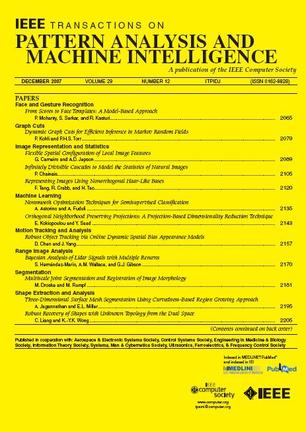Multilingual-Prompt-Guided Directional Feature Learning for Weakly Supervised Video Anomaly Detection.
IF 20.8
1区 计算机科学
Q1 COMPUTER SCIENCE, ARTIFICIAL INTELLIGENCE
IEEE Transactions on Pattern Analysis and Machine Intelligence
Pub Date : 2025-07-17
DOI:10.1109/tpami.2025.3590242
引用次数: 0
Abstract
Weakly supervised video anomaly detection has gained attention for its effective performance and cost-efficient annotation, using video-level labels to distinguish between normal and abnormal patterns. However, challenges arise from the diversity and incompleteness of anomalous events, complicating feature learning. Vision-language models offer promising approaches, but designing precise prompts remains difficult. This is because accommodating the diverse range of normal and anomalous scenarios in real-world settings is challenging, and the workload is significant. To tackle these issues, we propose integrating multilingualism and multiple prompts to improve feature learning. By utilizing prompts in various languages to define "anomaly" and "normalcy," we tackle these concepts across different linguistic domains. In each domain, multiple prompts are employed for adaptive top-K prompt selection of snippets. To enhance visual feature learning, a multi-granularity attention module combining Transformer and Mamba is designed. Mamba's long-range adaptation selection builds fine-grained temporal correlations among coarse-grained snippets, while Transformer enhances fine-grained information guided by coarse-grained information. Alongside a multilingual prompt guidance loss, we introduce a gradual directional loss to jointly optimize visual feature distribution and the top-K prompt selection. Our method demonstrates effectiveness on four video datasets and provides generalizability analyses on two medical datasets, including EMG and ECG temporal data.弱监督视频异常检测中多语言提示引导的方向特征学习。
弱监督视频异常检测以其高效的性能和低成本的标注方式,利用视频级别的标签来区分正常模式和异常模式而备受关注。然而,异常事件的多样性和不完全性给特征学习带来了挑战。视觉语言模型提供了很有前途的方法,但是设计精确的提示仍然很困难。这是因为在现实环境中适应各种正常和异常场景是具有挑战性的,而且工作量很大。为了解决这些问题,我们建议整合多语言和多提示来改善特征学习。通过使用各种语言中的提示来定义“异常”和“正常”,我们跨不同的语言领域处理这些概念。在每个域中,使用多个提示符来自适应top-K提示符选择片段。为了增强视觉特征的学习能力,设计了一个结合Transformer和Mamba的多粒度注意力模块。Mamba的远程适应选择在粗粒度片段之间构建细粒度时间相关性,而Transformer在粗粒度信息的指导下增强了细粒度信息。除了多语言提示引导损失外,我们还引入了渐进方向损失来共同优化视觉特征分布和top-K提示选择。我们的方法在四个视频数据集上证明了有效性,并对两个医疗数据集(包括肌电和心电时间数据)提供了通用性分析。
本文章由计算机程序翻译,如有差异,请以英文原文为准。
求助全文
约1分钟内获得全文
求助全文
来源期刊
CiteScore
28.40
自引率
3.00%
发文量
885
审稿时长
8.5 months
期刊介绍:
The IEEE Transactions on Pattern Analysis and Machine Intelligence publishes articles on all traditional areas of computer vision and image understanding, all traditional areas of pattern analysis and recognition, and selected areas of machine intelligence, with a particular emphasis on machine learning for pattern analysis. Areas such as techniques for visual search, document and handwriting analysis, medical image analysis, video and image sequence analysis, content-based retrieval of image and video, face and gesture recognition and relevant specialized hardware and/or software architectures are also covered.

 求助内容:
求助内容: 应助结果提醒方式:
应助结果提醒方式:


